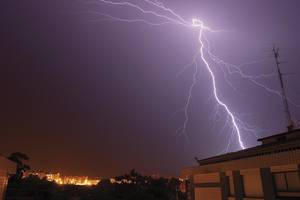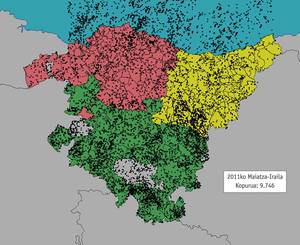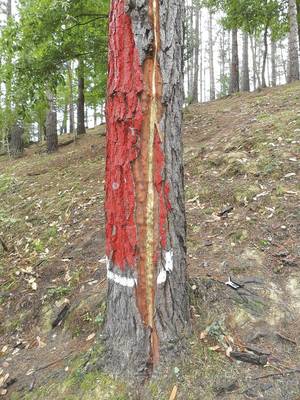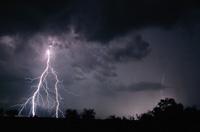Hunting lightning in the Basque Country
2012/03/01 López Herrera, Javier - Euskalmet, Euskal Meteorologia AgentziaTecnalia, Meteo Unitatea Iturria: Elhuyar aldizkaria
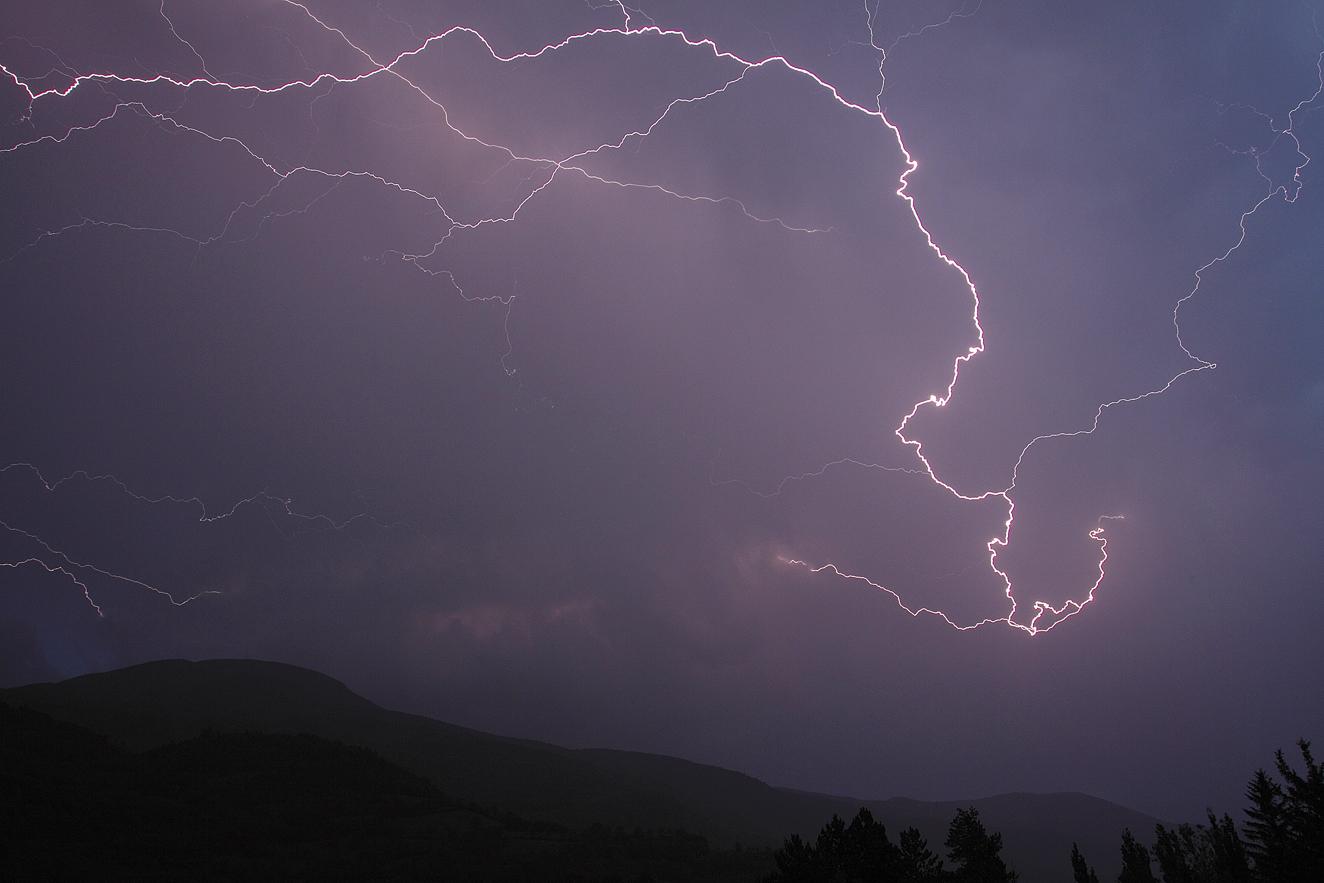
Terrible, spectacular, the rays have always created human admiration. In the religions of all cultures appear the gods related to the rays: Zeus, Thor, and here, in Euskadi, Maju and Mari. The explanations of the rays have always been between myth and reality. From a certain time, however, science began to prevail.
We have all heard of Franklin's experiments. But it was not the XVIII. The only one who worked in this field in the 20th century. The truth is that the first theories developed about lightning at the same time and in different places had nothing in common. However, the XVIII. From the mid-nineteenth century this field of research expanded enormously. Thanks to the new physical theories of the twentieth century, he began to unravel the truth of the rays, which were an electromagnetic phenomenon.
XIX. In the eighteenth century advances are made in the field of physics. Electromagnetism research was very important throughout this century and we can recall the names of scientists known in this field as Faraday and Maxwell.
At the end of this century, ray research gained strength in meteorological services, on the one hand, for its meteorological interest and, on the other, for taking advantage of the business of lightning protection systems. There were networks of meteorological observatories that began to make the first measurements using basic instruments such as comets.
XX. In the nineteenth century lightning detection systems began to appear that allowed to know more and more the characteristics of this phenomenon. Sensor networks are currently spread around the world. Different techniques are used to detect, locate and measure their physical characteristics. Knowledge of storms has improved greatly and the protection of people and goods remains a current issue.
How do rays occur?
Rays are electric currents generated by the movement of electrons. When a storm cloud is created, the particles inside collide with each other. In this way, the loads are distributed. That is, some particles are positively charged (positive ions) and other particles are negatively charged (negative ions). In general, we can say that the negative charged particles remain at the bottom of the cloud and positive ions at the top.
As in physics, the opposite charge particles are attracted. This generates a force of attraction between the negative charge accumulated in the lower part of the cloud and the positive load of the soil. This system (negative charge above, positive charge below and neutral air in the central part) is called dipole. When such a system appears, a potential or voltage difference (as occurs in a battery) is generated.
When this difference is very large, the above placed electrons begin to move down. When they are near the earth, the positive charges begin to rise and, when contact occurs, what we know as lightning occurs.
Here we must highlight a difference between thunder, lightning and lightning. The light we see is lightning; thunder, sound that is heard; and lightning, complete electric shock.
Lightning from clouds to earth is the most common, although different classifications can be made. For example, depending on where they occur, the rays can be between clouds or from clouds to earth. The former move (or within a cloud) from one cloud to another, always between positive and negative load cores. The latter, when finished on the ground, can be harmful due to the breakdown of electronic systems and damage to buildings or serious accidents for humans.
You can also make a classification according to polarity, that is, considering that the rays are positive or negative. This classification is performed according to the movement of negative loads. If the negative charge goes from the cloud to the ground, the lightning is negative. Moving from earth to cloud is positive. This is rare, but it can happen if the polarity of the cloud is inverted.
The rays from the cloud to the earth can be included in another classification: if the first load movement occurs from top to bottom, the ray is descending; and if it is from bottom to top, it is ascending.
Therefore, the rays from the cloud to the earth can be of four types: negative to the low (the most common) [Rakov and Uman], positive to the low, negative to the rise and positive to the increase.
It should be mentioned that the ascending rays are common in the towers and tall buildings, and here, in the Basque Country, they occur, especially in the towers located in the mountains.
How do we measure and place the rays?
How is such a rapid phenomenon detected? Sometimes we cannot see them and only hear the thunders that derive from them, but XX. At the beginning of the 20th century they realized that when a storm occurred a noise was heard in the radio when lightning struck.
When the electric lightning discharge occurs, a radio frequency emission is generated. Thus, an antenna is used to detect this radio frequency signal. Once the signal is received, its intensity is measured with its duration. Therefore, a sensor will detect and measure a beam, but to place it well more than one sensor is needed.
In a sensor network, the lightning signal reaches almost simultaneously all sensors as it travels at the speed of light (almost 300,000 km/s). Therefore, these sensors must be synchronized with a GPS, since the measurements must be done with an accuracy of millions of seconds. When sensors collect and process data, they send all information to a computer for processing, where triangulation is calculated to locate each beam.
Lightning in Euskadi
Euskalmet uses three sensor networks to measure and locate lightning. The technologies used to detect rays depend on how often they are detected. In the VHF band (very high frequency) lightning sources are mainly measured between clouds; in the LF band (low frequency or low frequency) lightning discharges are measured to ground; and in the VLF band (very low frequency) rays of both types are measured and placed. Data from these networks allow viewing storm phases in real time. In Euskalmet, lightning data are collected with a maximum delay of 15 seconds and are immediately represented for use by weather monitors.
In addition, lightning data is saved to later investigate storms. As for the amount detected in the heat times of the last three years (May to September), it has been similar in 2009 to 2011, but the period of 2010 was curious since there were very few storms and lightning. The Euskalmet network measured between May and September in 2009 some 8,500 rays and in 2011 some 9,750. In 2010, however, it reached 3,700.
As seen during these years, we can say that they occur mainly on the mountain lines and on the coasts. On the other hand, in the region in which we live (in these latitudes), taking into account our orography and climate, the number of rays we had had last year is normal.
However, the rays are not only produced in the hot season, although most are concentrated at this time. They are also produced in autumn and winter. In addition, winter storms have special characteristics. More positive rays can occur and storm clouds are much lower. As a result, the ascending rays produced from the towers may be more frequent, as occurred in the radar tower of Capildui de Euskalmet [López et al . ].
However, the rays are not only spectacular, but also dangerous. On August 31 an accident occurred in the forest of Oma. During a storm, lightning struck two visitors. When wet, the electric current was passed through the skin and burned in the skin. In addition, one lost consciousness and lacked memory. However, if they were dry, the electric current would pass inside and the wounds would be much more serious.
Euskalmet studied the case and discovered that lightning affected two trees in the forest. Visitors were under a dry tree, lightning struck the tip and the current descended through the dry trunk to find their bodies wet. Then the current leapt and fell on the surface of the wounded.
These accidents are rare, but safety tips can occur and should be followed: when weather services indicate the likelihood of a storm, open forests and rural areas should be avoided, not protected under an isolated tree and, if possible, introduced into a car with lockers closed. When we are in an isolated field (and when the rays are very close) and there is no place to protect it, the best option is to squat it.
To know if a storm approaches or moves away we have to count the seconds between lightning and thunder. The more seconds, the farther the storm will be. Considering the speed of sound (340 m/s), if 10 seconds pass between lightning and thunder, we can say that the storm is more than 3 km, enough distance to be sure.
Euskalmet will continue to care for and improve ray detection networks and has begun to use new systems to better understand this physical phenomenon: electric fields meters and measuring sensors of currents passing through the towers by rays.
With this work we will know more and more the rays and characteristics of the storms that occur in the Basque Country.
BIBLIOGRAPHY

Gai honi buruzko eduki gehiago
Elhuyarrek garatutako teknologia



